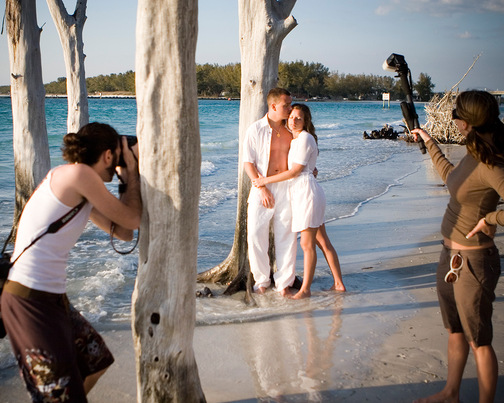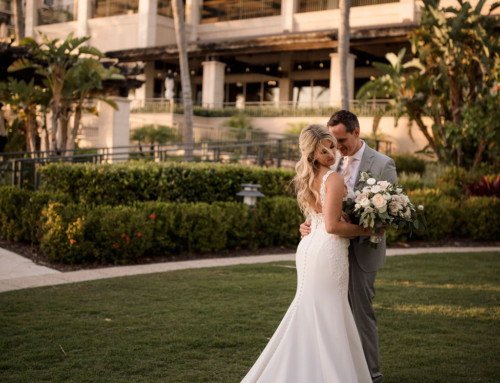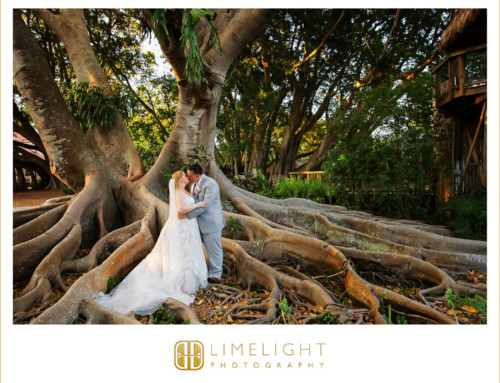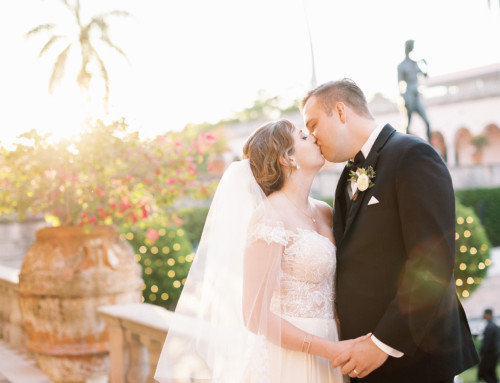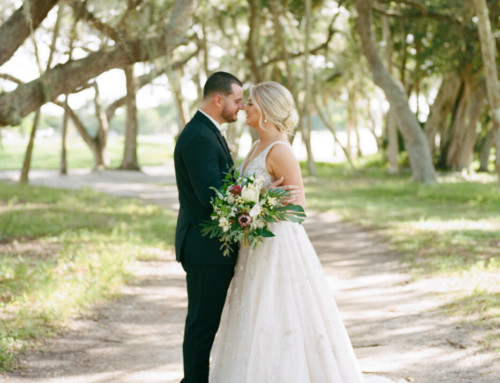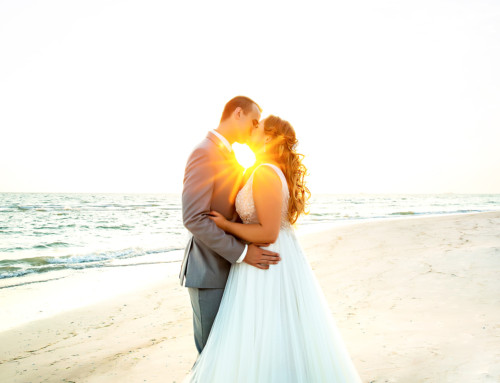Step 1: Settle on a Style
You will need to first decide what type of photography style you prefer, as that will help determine which kind of photographer you’ll want shooting your wedding. Do any of the following appeal to you?
Documentary: Instead of a series of posed photos, these are candid or spontaneous pictures (read: not styled) of people, decor and the action. Typical shots might include the lavish raw bar before guests start digging in, your motley crew of cousins dancing or you and your bridesmaids laughing, champagne in hand. With a purely photojournalistic photographer, you’ll very rarely see people staring at the camera — the photos capture the moments exactly as they happened, and together they tell a story.
Portraiture: If you prefer classic portraits (think: your parents’ wedding album), go with a traditional photographer who specializes in portraiture. These are posed shots of the two of you, friends and family in front of various backdrops. That’s not to say there isn’t room for creativity in this category. While some photographers will pose subjects in more traditional spots (like at the ceremony altar or out on the lawn of the country club) and in more formal poses (standing as a group together), other photographers take portraiture further into the creative realm with a more dramatic composition (the couple sitting on a lounge chair at their hip hotel reception venue, or the couple holding hands in the middle of a nearby dirt road with the mountains in the background).
Fine Art: Though it’s similar to documentary photography, this style gives the shooter greater artistic license to infuse their particular point of view and style into your photographs. So while the shots reflect reality, it’s the photographer’s reality. The photos are dramatic and gorgeous, but are — or look as though they were — shot on film with a grainier, dreamier, more muted appearance. Usually the object (or couple) is in focus and the background appears to blur. Motion also looks very natural in this style of photography. The few wedding photographers in the world who shoot only on film tend to fall into this category, and typically they shoot in black and white, though some will do a mix of both. That said, a photographer using a digital camera can still capture this style with the right gear and camera lens. And some photographers will alternate between digital and film. Not all photographers who take a fine-art approach shoot portraits, so if it’s really important to your mom to have posed family shots, look for someone who does both, or consider hiring a second shooter for the portrait sessions.
Edgy-Bold: This style of photography, an offshoot of fine art, is marked by outside-the-box, tilted angles (called “Dutch angles”) and unconventional framing. So instead of a straight-on shot of the couple exchanging vows at the altar, the photo might look tilted, with an object like an altar arrangement or a candle in the foreground. Or the photo of the bride having her makeup done might be shot from above, with an emphasis on the eye shadow brush rather than on her face. Even a single portrait of a bridesmaid might be shot so that her face takes over only the bottom right of the photo and the rest of the space is filled with the wall or whatever’s behind her.
Many wedding photographers can do a blend of portraiture and documentary-style shots, and will do a mix of black-and-white and color images, but if there’s a special style you love, make sure to focus on photographers who specialize in it.
Step 2: Do Your Homework
Start your search by reading reviews from recent brides and browsing hundreds of local listings. Carefully review potential photographers’ websites and blogs to check out photos of other weddings they’ve shot, which will give you an idea of their style. The design of the website may also give you clues about the photographer’s personality and sensibility. Check out their Facebook and Twitter pages too, if possible — is the feedback from clients good? How does the photographer respond?
Step 3: Set Up Interviews
You must meet your potential photographers in person. If you like what you see on their sites — and their fees are in your ballpark range — call to see if they’re available for your wedding date. If the photographer is already booked on your date, you may want to see if they have an associate or can recommend another shooter with a similar style. Set up in-person meetings with three to five potential photographers who are available on your wedding date to look at more of their work and assess whether your personalities mesh. Be prepared to talk about your venue, your wedding style and what you envision for your photos.
Step 4: See a Few Full Wedding Albums
Don’t base your decision solely on what you see in a photographer’s highlights gallery or album. For good reason, photographers show prospective clients a portfolio of their best pictures, all from different weddings, so you’re seeing the best of the best. The problem with that is you won’t get a well-rounded idea of their work. Ask to see two or three full galleries from real weddings they’ve shot (not someone else at their company) so you can get a better idea of what your complete collection of photos might look like after the wedding. If you see that the full gallery photos are just about as good as the ones chosen in the highlight gallery (that is, they’re all so good it’s impossible to choose!), you’re on the right track. And ask to see at least one or two complete albums of weddings that are in similar settings to yours. For example, if you’re planning an indoor affair with dark lighting, don’t just look at weddings shot outdoors in natural sunlight. And if you’re planning to say “I do” on a beach at sunset, you’ll want to see examples of that.
Step 5: Review Albums With a Critical Eye
When reviewing a photographer’s album, look for the key moments you want captured: Did they get photos of both the bride and the groom when they locked eyes for the first time? Also look for crispness of images, thoughtful compositions (does a shot look good the way it was framed, or is there too much clutter in the frame?) and good lighting (beware of washed-out pictures where small details are blurred — unless that’s the style you’re after). It’s also very important that you detect sensitivity in capturing people’s emotions; make sure the photographer’s subjects look relaxed, not like deer caught in headlights. While you two are, of course, important, you want to see smiling shots of your friends too.
Step 6: Make Sure Your Personalities Mesh
Don’t underestimate the importance of liking and bonding with your photographer. Is the photographer excited by your vision when you describe it? When they make suggestions, do they present them in a clear and respectful way, or are they timid? Are their mannerisms off-putting? In order to get the best photos, go with a pro who has a firm grasp of social graces but is bold enough to go out hunting for great images and who, above all, puts you at ease and doesn’t irritate you in any way. Remember: They’ll be shadowing your every move, and the more comfortable both of you are with the photographer, the better the photos will turn out. Likewise, you don’t want the photographer to offend or annoy any guests, but to shoot them in their best light in an unobtrusive way. To get the best photos, your photographer needs to be assertive enough to seek out great moments, cajoling enough to coax relaxed smiles and natural stances from guests and calm enough to be a positive force. They should ask lots of questions and be a good listener.
Step 7: Confirm Your Shooter(s)
Many larger photo studios have more than one photographer on staff, and unless you specify it in your contract, the lead photographer may not be the one shooting your day. Since every professional has a different style, technique and personality, you need to make sure that the one you interview and “click” with will be the same one who works your wedding. Also, include specific stipulations in the contract about who will cover for the photographer should something happen on the actual day. Check whether the photographer will bring any assistants to your wedding, and if so, how many? If you have room in your budget, consider hiring a second shooter. Many top-notch photographers include a second shooter in the contract, but if this isn’t a part of the deal, you may want to ask about the possibility. The main benefit to having two shooters is that you, of course, get twice as much coverage. For example, during your formal photo session, one photographer can capture the formal photos, while the second one can get behind-the-scenes, photojournalistic photos, like your guests mingling. If you’re having a larger wedding (250 guests or more), you might even want to ask about having three shooters so that your photography team can be sure to capture the event from all angles.
Step 8: Compare Packages
You won’t be able to nail down an exact dollar amount until you’re sure of what you want, how many albums you need and where your photographer is based, and packages range from $2,500 all the way up to $15,000-plus on the higher end of the spectrum. When interviewing candidates, ask for a general range based on the photographer’s standard “shooting fee” and package, plus their standard rates for the type of album you think you’ll want and the amount of coverage you’re hoping to book them for (day-of, full weekend). It’s important to find out what’s included in the standard package, plus the basic range for any extras you may want, like an engagement shoot, special effects or additional coverage, so you can compare rates. In particular, find out exactly how many hours of coverage are included. Ideally, you want your photographer to be there for your full wedding day: from when you start getting ready until after you make your grand exit from the reception. While packages vary, most include about 6 to 12 hours to cover everything from preceremony events (getting ready with your bridesmaids or first-look photos) to the end of the reception. It’s usually better to pay for more coverage if there’s a chance you’ll run over and you definitely want your photographer there until the end (overtime is usually charged at a higher hourly rate). Also consider whether you’ll want to do an engagement shoot or have your photographer shoot other events during your wedding weekend (the guys’ golf outing, the bridesmaid lunch).
Step 9: Ask About Your Rights
Most contracts stipulate that the photographer owns the rights to all photos taken at the wedding, even the ones of you. In other words, the photographer can use them promotionally (on their website or blog, submit them for publication and even use them in ads). That also means that you can’t just post the digital proofs they send you — most photographers have a policy that you can only share watermarked images or images with their credit on them. Also, unless you negotiate otherwise, if you want to print the images yourselves or order an album from another source, you’ll have to buy the rights to the images.
Step 10: Get the Postproduction Details
It usually takes at least a month to get all those photo proofs back from your photographer. Why? Your photographer is shooting enormous raw files far bigger than your typical JPG. Shooting raw files gives your photographer greater ability to correct the photo, but it also takes a longer time to upload, process and edit all those files (in order to correct color levels and so on). It varies, but many photographers say that they spend an additional 40 hours editing images from a single wedding, so it can take up to six to eight weeks (or longer, depending on the photographer and how busy they are) to get proofs back. Here’s what to ask: How many images should I expect? Will they be high-resolution or low-resolution? Will I be able to get prints made myself, or does the photographer retain the rights to the images? Will the proofs I see be the retouched versions, or does that happen after I select the photos I want? Speaking of retouching, ask about retouching options and special effects (which can range from simple white balancing to beauty retouching and stylized art effects like super-saturated colors) and the additional cost for both.
All of the information above is from theknot.com
Read more: Wedding Photography: Getting Started Finding the Right Wedding Photographer – Wedding Planning – Wedding Photography http://wedding.theknot.com/wedding-planning/wedding-photography-videography/articles/wedding-photography-getting-started.aspx#ixzz2mcDyZk5T

